Eye fatigue on computer screens
Most of us nowadays use computers at work, eye strain on the computer screen has become a big problem associated with work. Studies show that eye fatigue and other annoying eye symptoms occur in 50 to 90 percent of computer use cases.
These problems can range from physical fatigue, reduced productivity and increased number of errors at work due to problems such as eye fatigue and red eyes.
Here are simple steps you can take to reduce the fatigue of your computer's eyes and other common symptoms of
computer visual syndrome

Use of proper lighting:
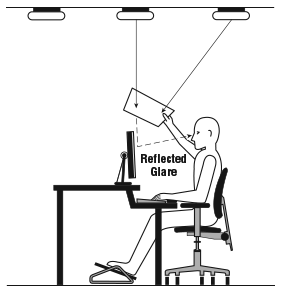 Eye strain is often caused by excessive bright light from either external sunlight entering through a window or hard interior illumination. When using a computer, ambient lighting should be about half bright as the one usually found in most offices.
Eye strain is often caused by excessive bright light from either external sunlight entering through a window or hard interior illumination. When using a computer, ambient lighting should be about half bright as the one usually found in most offices.
Eliminate the outside light by closing curtains, shades or blinds. Reduce internal illumination by using fewer lamps or fluorescent lamps or use lower intensity bulbs and tubes. If possible, place your computer screen or screen so the windows are on the side instead of behind or behind it.
Many computer users find that their eyes feel better if they can avoid working under general-purpose fluorescent lights. If possible, turn off the fluorescent lights in your office and use floor lamps that provide indirect illumination with halogen or halogen lighting.
Sometimes the transition to "full spectrum" fluorescence lighting that most closely approximates the light spectrum emitted by sunlight may be more comfortable for computer work than regular fluorescent lamps. But even full-spectrum lighting can cause discomfort if it's too intense. Try to reduce the number of fluorescent tubes installed above your computer's workspace if you are disturbing the lighting.
Take a complete eye exam
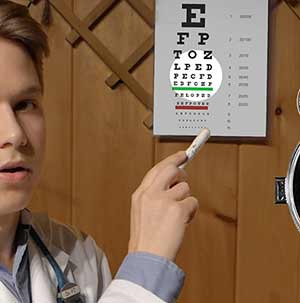 The most important thing you can do to prevent or deal with vision problems in the computer is a complete eye exam. If you have not had your eyes looked at, for more than a year, plan a visit with a doctor near you. Many times a minor degree of hyperopia or Astigmatism can cause significant eye strain on the computer if left uncorrected.
According to the National Institute of Occupational Safety and Health, computer users should be screened before they start working on a computer and once a year.
The most important thing you can do to prevent or deal with vision problems in the computer is a complete eye exam. If you have not had your eyes looked at, for more than a year, plan a visit with a doctor near you. Many times a minor degree of hyperopia or Astigmatism can cause significant eye strain on the computer if left uncorrected.
According to the National Institute of Occupational Safety and Health, computer users should be screened before they start working on a computer and once a year.
During your examination, tell your doctor how often you use the computer at work and at home. Measure the distance of your screen from your eyes when you sit on your computer and update so that your eye doctor can control your eyes at this particular working distance.
Minimize reflections.
Reflection on walls and painted surfaces as well as reflections on your computer screen may also cause fatigue on the computer's eyes. Consider installing an anti-glare screen on your screen and, if possible, paint white, lighter white walls with a matte finish.
Again, cover the windows. When the outside light can not be reduced, consider using a computer hood.
If you wear glasses, buy lenses with anti-reflective coating (AR). AR coating reduces reflection by minimizing the amount of light reflected from the front and rear surfaces of your glasses lenses.
Upgrade your screen.
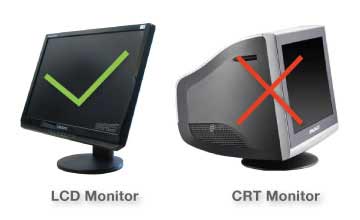 If you have not already done so, replace the old screen with a tube (called a cathode ray tube or CRT) with a flat-panel LCD, such as on laptops.
If you have not already done so, replace the old screen with a tube (called a cathode ray tube or CRT) with a flat-panel LCD, such as on laptops.
LCD monitors are easier on the eyes and usually have an anti-reflective surface. Old CRT screens can cause a remarkable flicker of images, which is a major cause of eye strain on the computer. Even though this flicker is impossible, it can still contribute to eye strain and fatigue while working with a computer.
Complications due to flicker are even more likely if the screen refresh rate is less than 75 hertz (Hz). If you need to use a CRT at work, adjust the screen settings to the highest possible refresh rate.
When selecting a new flat screen display, select a screen with the highest resolution possible. The resolution is related to the "pitch pitch" of the screen. In general, screens with a lower tilt of the dots have sharper images. Choose a screen with a dot height of 0.28 mm or less.
Flickering is not a problem with LCD screens, as the brightness of the pixels on the screen is controlled by a "backlight" usually operating at 200 Hz.
If you notice a lower refresh rate (eg 60 Hz) on a LCD screen, do not worry - this tells you how often a new image is taken from the video card, not how often the screen brightness is updated, and this function typically is not associated with eye strain.
Finally, select a relatively large screen. For a desktop computer, select a screen with a screen size of at least 19 inches.
Customize your computer's display settings
 Adjusting your computer's screen settings can help reduce eye strain and fatigue. In general, these adjustments help:
Adjusting your computer's screen settings can help reduce eye strain and fatigue. In general, these adjustments help:
Brightness . Adjust the brightness of the screen so it is approximately the same as the brightness of your work station environments. As a test, look at the white background of this site. If it looks like a light source, it's very bright. If it looks dull and gray, it can be very dark.
Text size and contrast . Adjust text size and contrast for comfort, especially when reading or composing large documents. Typically, black printing on a white background is the best combination for comfort.
Color Temperature . This is a technical term used to describe the range of visible light emitted by a color screen. Blue light is visible short wave light associated with greater eye strain of the larger wavelength shades, such as orange and red. Reducing the color temperature of your screen reduces the amount of blue light emitted by a color screen for better long-lasting viewing comfort.
Exercise your eyes ..
Another cause of eye strain on the computer is fatigue. To reduce the risk of tired eyes with constant focus on your screen, look away from your computer at least
every 20 minutes and look at a remote object at 6 meters (
at least 20 feet away ) for at least
20 seconds . Some eye doctors call this rule "20-20-20". Looking too far relaxes the focusing muscle in the eye to reduce fatigue.
Another exercise is to look too far on an object for 10-15 seconds, then look something close for 10-15 seconds. Then look back at the remote object. Do this 10 times.
This exercise reduces the risk of focusing your eyes to "lock" (a condition called spasm) after prolonged computer work.
Both of these exercises will reduce the risk of eye strain on the computer. Also, do not forget to blink frequently during exercises to reduce the risk of a dry eye associated with the computer.
Learn about special computer glasses..
 For greater comfort on your computer, you can ask your optician to use special lenses with new type computer filters , as well as modify your prescription glasses to create customized eyeglasses.
For greater comfort on your computer, you can ask your optician to use special lenses with new type computer filters , as well as modify your prescription glasses to create customized eyeglasses.
If you normally wear contact lenses, it may dry out and disturb you during continuous work with a computer.
Computer glasses is also a good choice if you use multifocal glasses because these lenses are generally not optimal for the distance from your computer screen. You can also see photochromic lenses or specialized Lutina lenses for computer glasses to reduce your exposure to harmful, high-energy blue light emitted by digital devices. Ask your optician for details.
Blink more frequently.
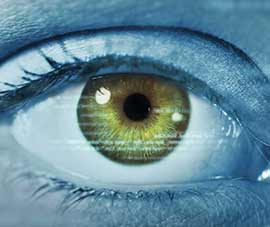 Blinking of the eyes is very important when working on a computer. Frequent blinking moistens your eyes to avoid dryness and irritation.
Blinking of the eyes is very important when working on a computer. Frequent blinking moistens your eyes to avoid dryness and irritation.
While working on a computer, people tend to blink less often - about a third as normal - according to studies.
Tears that overlap the eye evaporate faster during long phases that do not blink the eyes and this can cause dry eyes. Also, the air in many office environments is dry, which can increase how quickly your tear evaporates, causing more dry eye problems.
If you experience dry eye symptoms, ask your doctor for artificial tears for use during the day.
Incidentally, do not confuse eye drops with drops intended for "red eyes". These can actually make your eyes look better - as they contain ingredients that reduce the size of the blood vessels on your eye surface to look whiter. But it does not mean they reduce dryness and irritation.






 Eye strain is often caused by excessive bright light from either external sunlight entering through a window or hard interior illumination. When using a computer, ambient lighting should be about half bright as the one usually found in most offices.
Eye strain is often caused by excessive bright light from either external sunlight entering through a window or hard interior illumination. When using a computer, ambient lighting should be about half bright as the one usually found in most offices.
 The most important thing you can do to prevent or deal with vision problems in the computer is a complete eye exam. If you have not had your eyes looked at, for more than a year, plan a visit with a doctor near you. Many times a minor degree of
The most important thing you can do to prevent or deal with vision problems in the computer is a complete eye exam. If you have not had your eyes looked at, for more than a year, plan a visit with a doctor near you. Many times a minor degree of  If you have not already done so, replace the old screen with a tube (called a cathode ray tube or CRT) with a flat-panel LCD, such as on laptops.
If you have not already done so, replace the old screen with a tube (called a cathode ray tube or CRT) with a flat-panel LCD, such as on laptops.
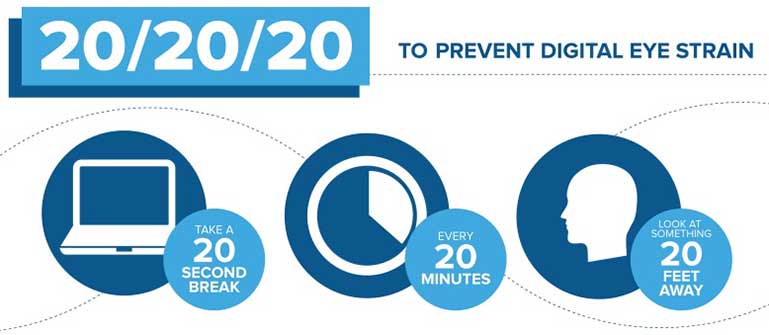
 For greater comfort on your computer, you can ask your optician to use special lenses with
For greater comfort on your computer, you can ask your optician to use special lenses with  Blinking of the eyes is very important when working on a computer. Frequent blinking moistens your eyes to avoid dryness and irritation.
Blinking of the eyes is very important when working on a computer. Frequent blinking moistens your eyes to avoid dryness and irritation.